Reading time is around minutes.
The RT-N66U -
Asus’ RT-N66U “Dark Knight” 802.11n dual-band wireless router follows a design that Asus rolled out a couple of product generations ago. It is something of a wedge design with a crenelated surface. The surface and the shape give it a nice look when laying down or standing up. Looks are only part of the reason why you might want to buy the RT-N66U. However outside of the clean look that the wedge shape gives you there are some other benefits to the shape (that we will cover later).
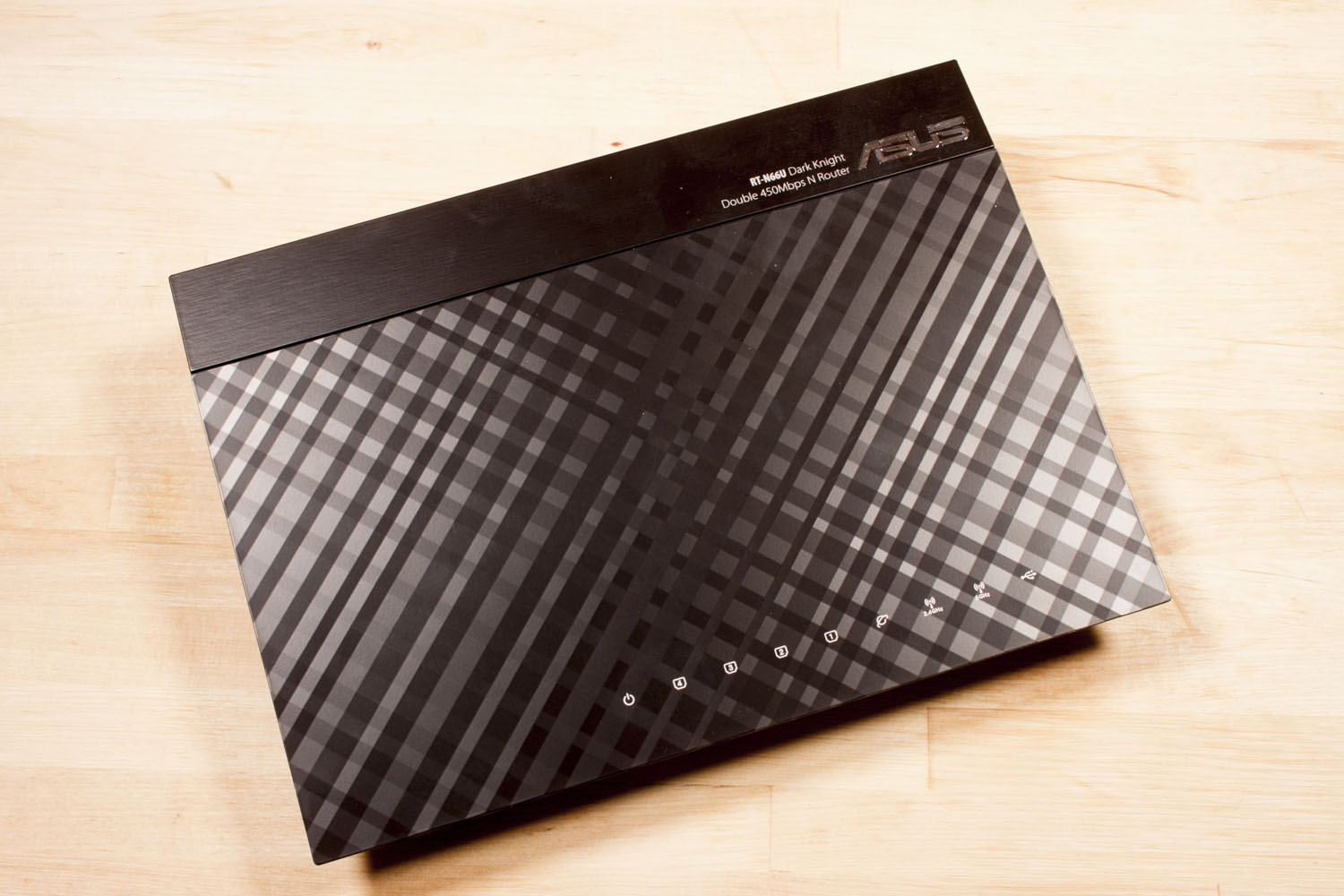 |
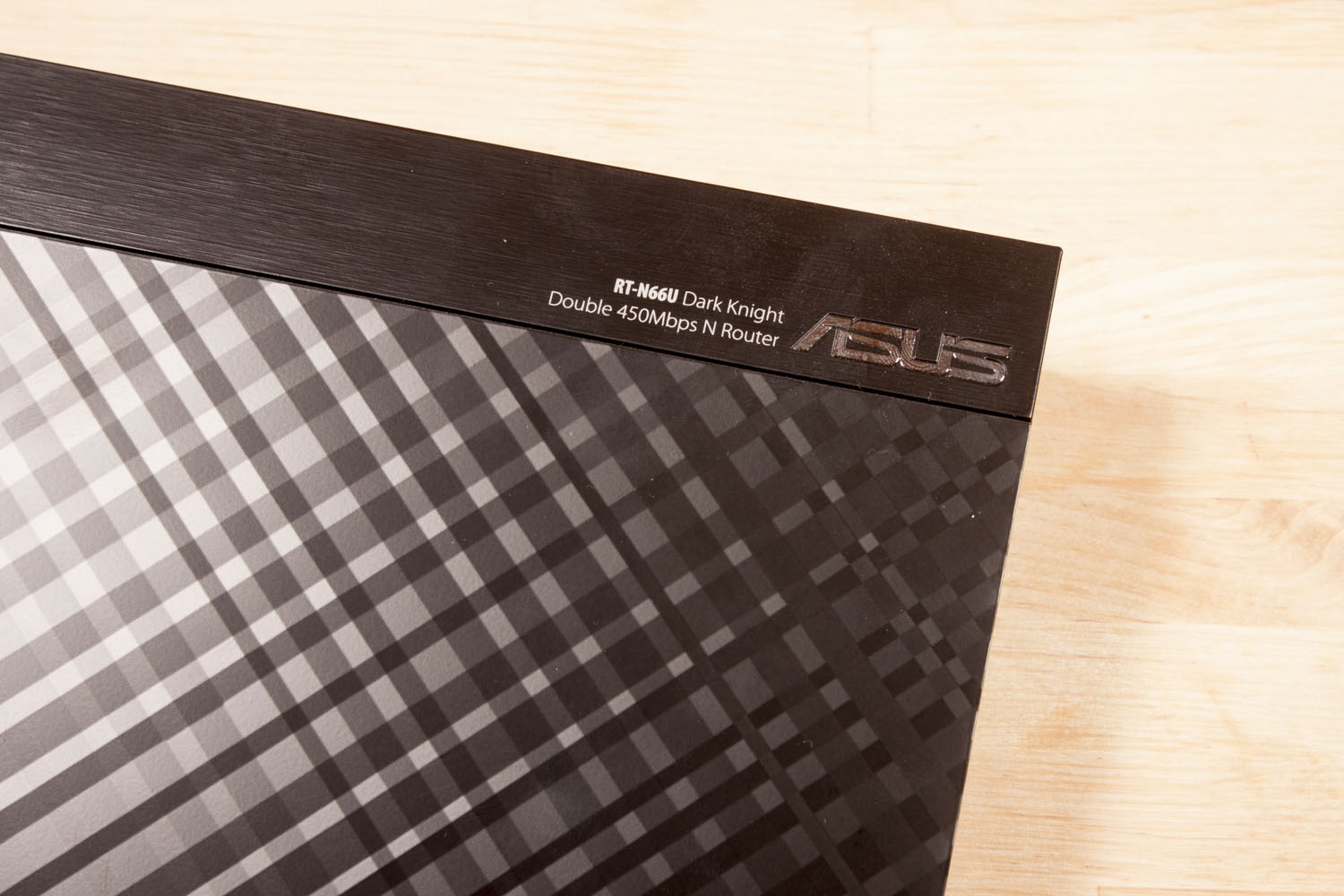 |
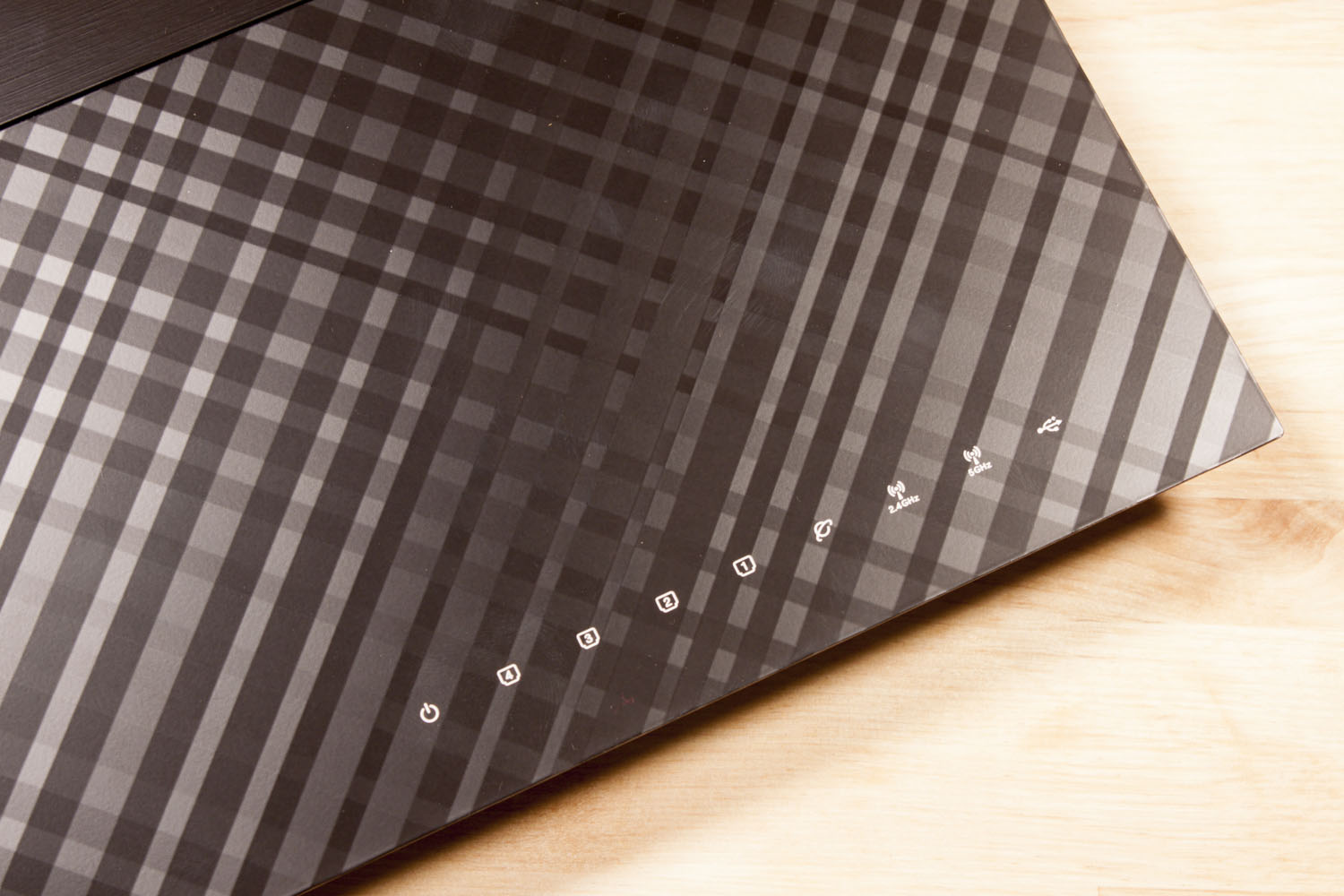
The top, or front depending on how you set it up) has the Asus logo, the model number/name and a series of LEDs at the bottom that light up for different functions (Ethernet, wireless, USB, Internet, etc.).
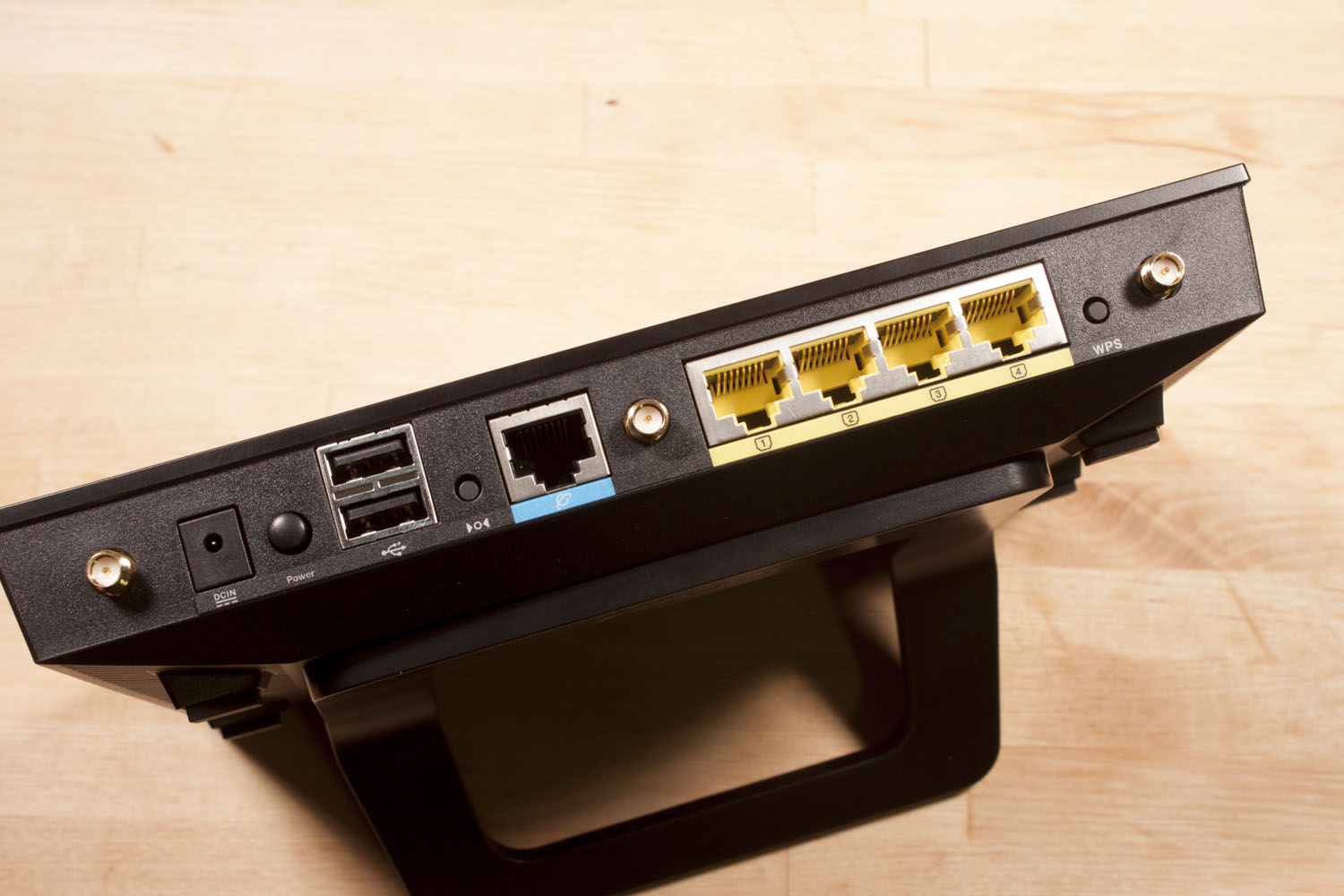 |
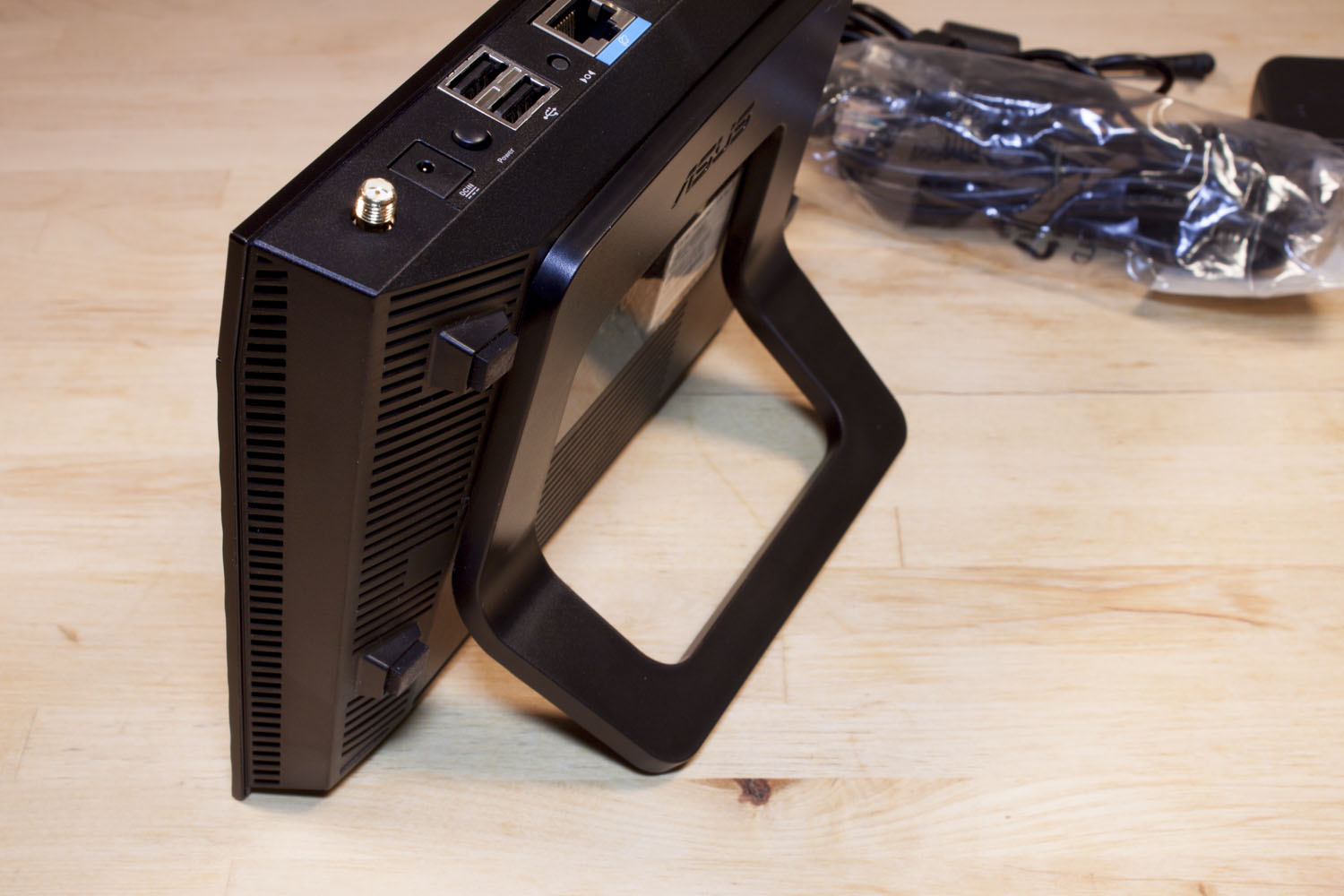 |
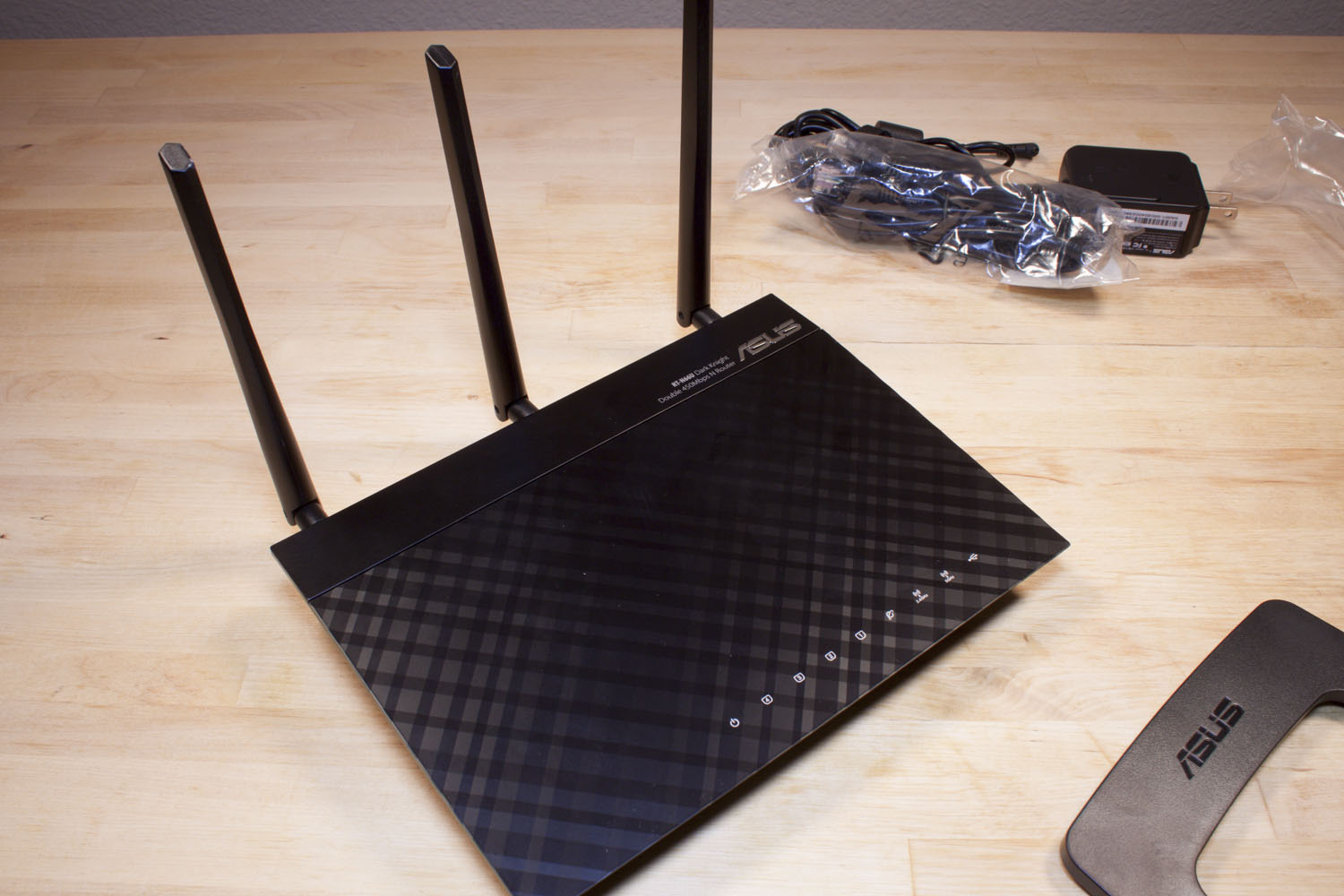
Looking at the back of the RT-N66U we find four 1Gbe Ethernet ports for your internal LAN, a 1Gbe LAN port for Internet, two USB 2.0 ports for peripherals (printers or storage), three antenna ports plus buttons for power, reset and WPS. The back and sides have a series of vent slits to allow for fairly good air flow. After taking a look at the outside we dove right in and opened the RT-N66U up to see what Asus had hidden under the hood.
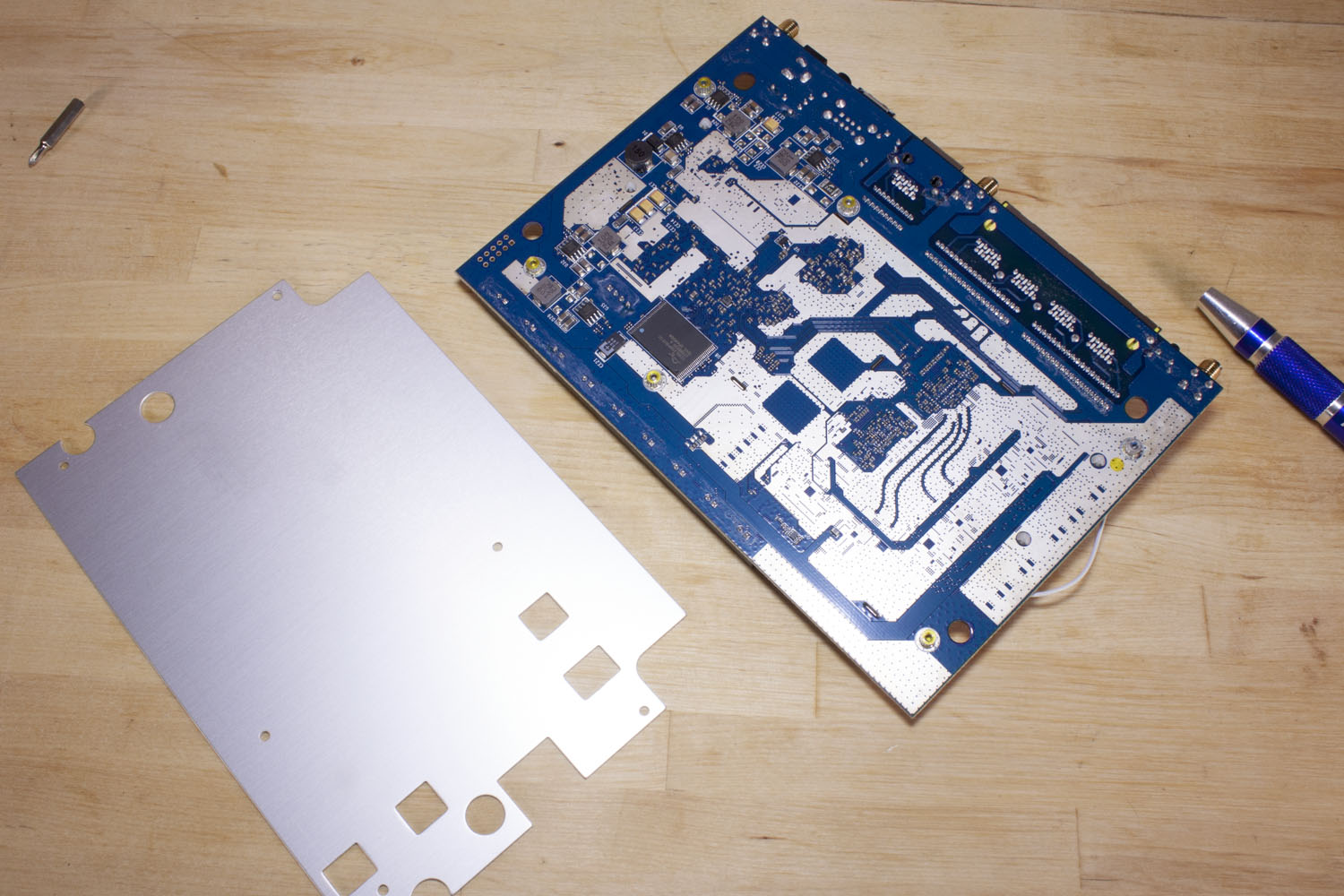 |
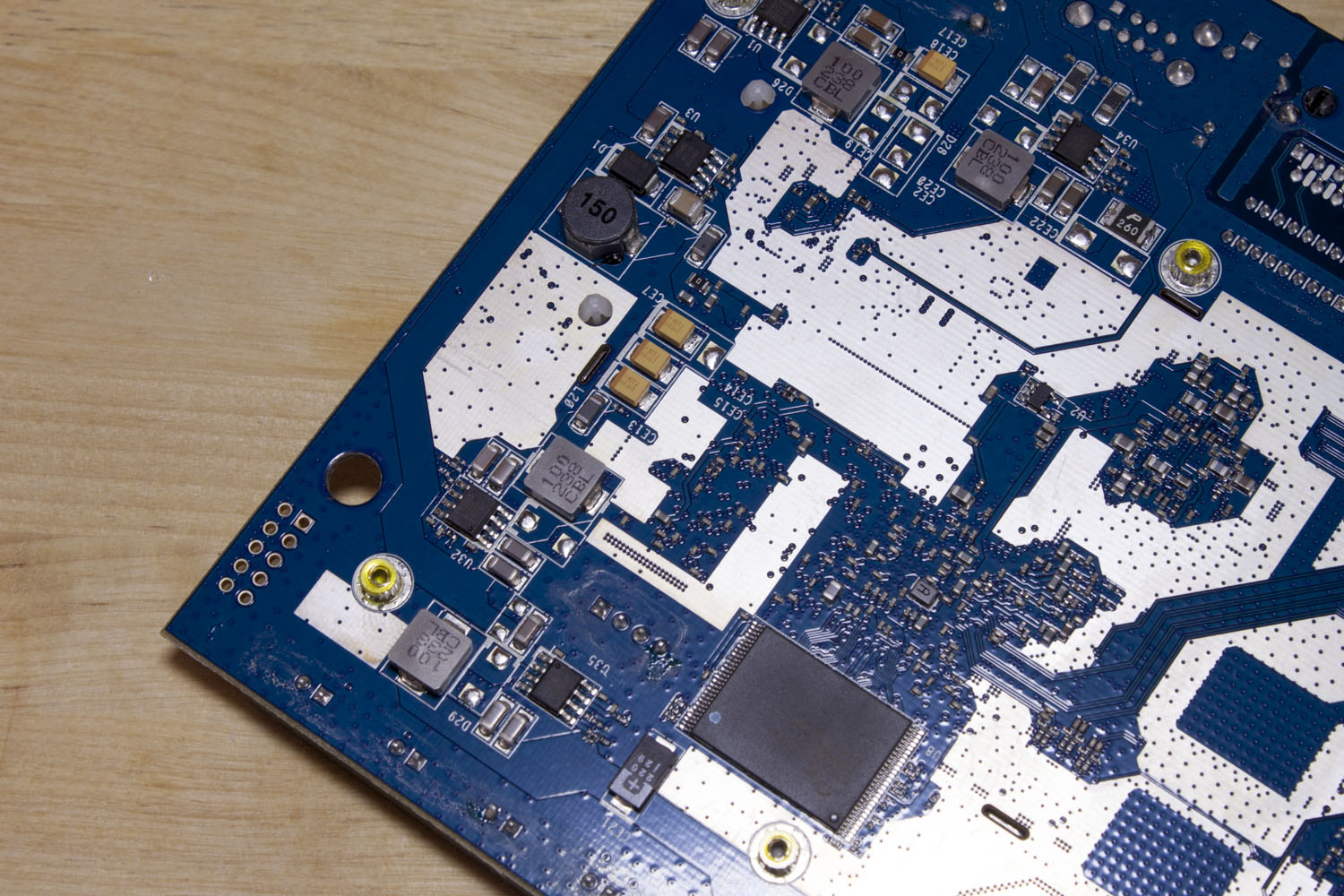 |
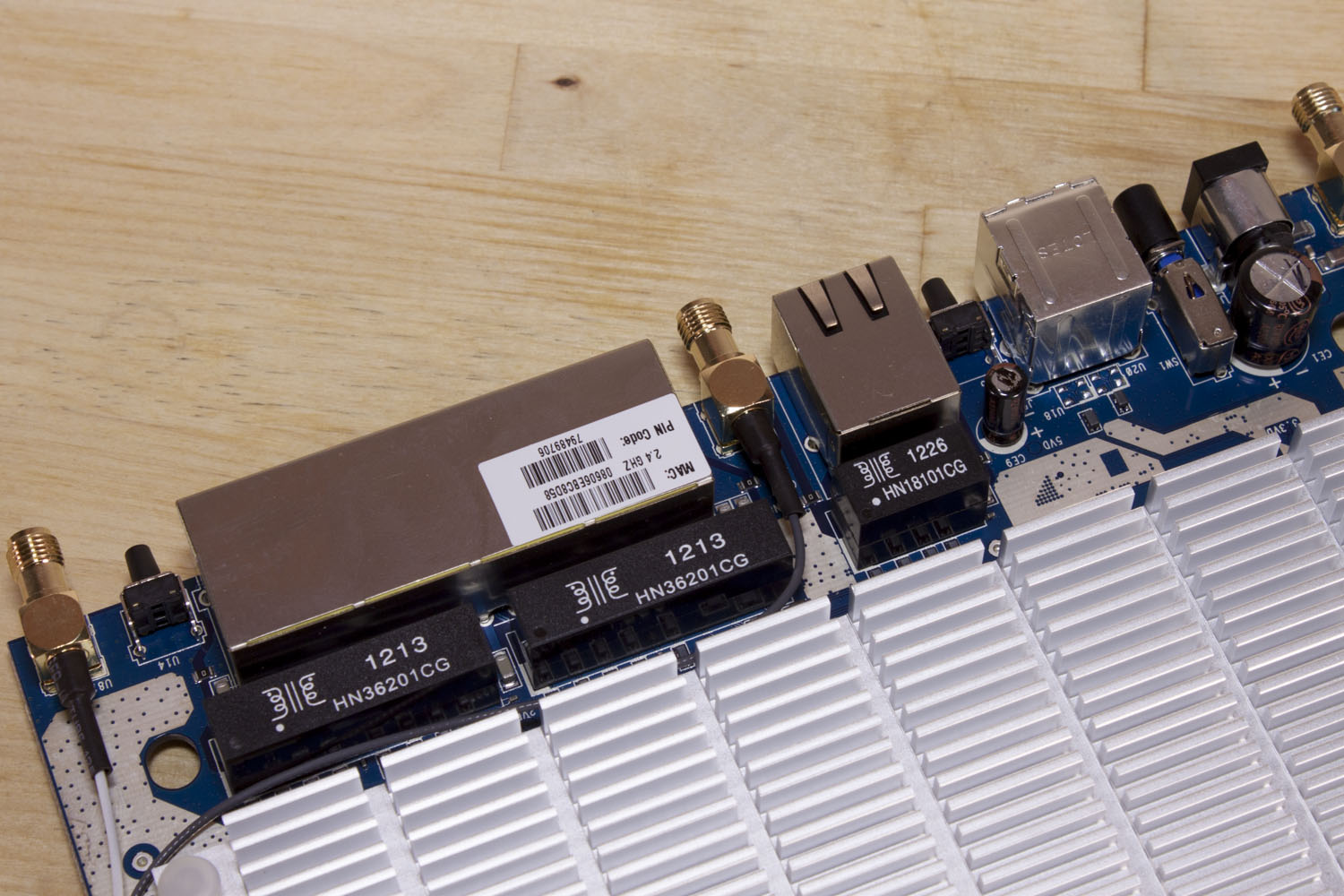 |
After opening things up we noticed that Asus put what appears to be an EMI (Electro Magnetic Interference) shield on the back of the PCB. This is an interesting addition in that is keeps outside influences out of your performance. After we strip the EMI shield off we can see an interesting layout with more shielding built into the PCB for specific trace areas and circuits, it is a nice touch.
We also noticed something in our unit that is a concern. If you look at the solder points on some of the antenna and port connections you can see they are dull. This is often a sign of “cold solder”. What this means is that the solder was not hot enough to flow freely and bound to the mount points. Over time and heat cycles this type of solder joint can break down and hinder the flow of electrons through these joints. This could be bad for the life of the product if this type of solder joint is present in a large number of units. Considering the way most products are manufactured these days it is likely that there are a number of products with this type of joint. It is something to keep in mind when buying this product.
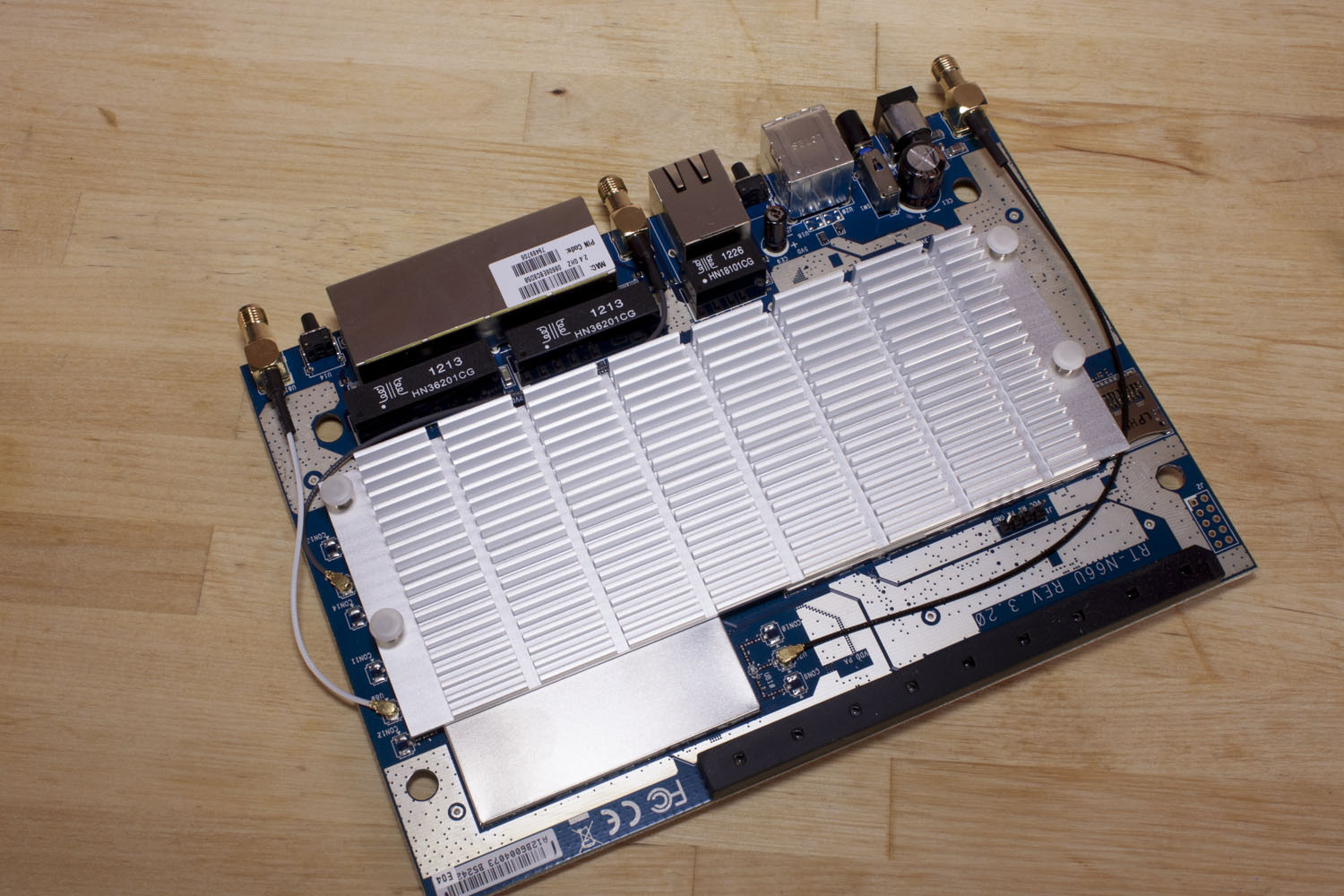 |
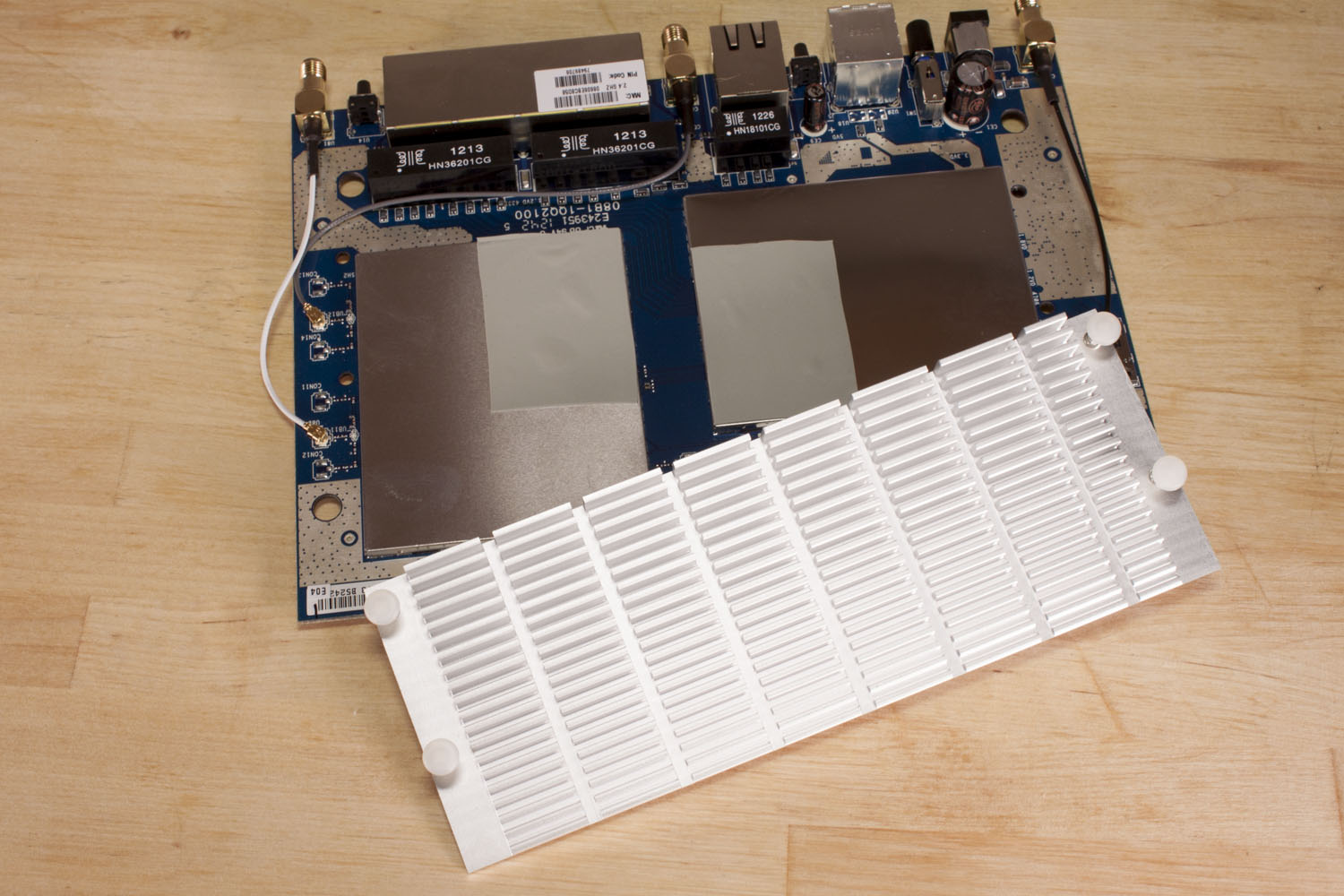 |
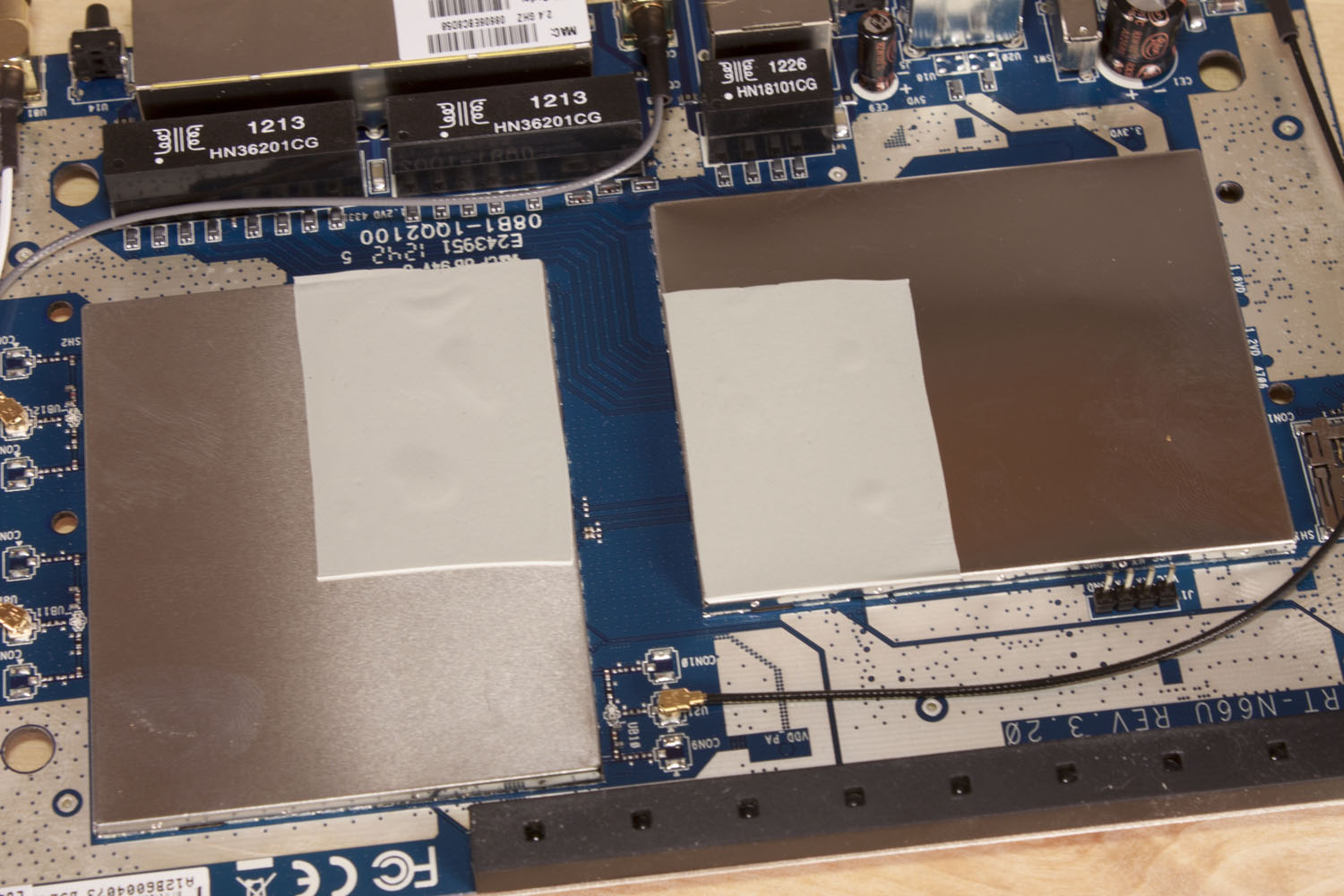 |
On the other side of the PCB we find something unexpected. Asus has opted to put a heatsink on top of the EMI shielding for both the 2.4GHz and 5GHz radios. It is an odd move as in most cases the EMI shielding does not touch the circuitry so there is going to be a gap between this heatsink and the items getting hot. As we did not remove the shielding we do not know if Asus bridged this gap or not, but we would hope so. Under one of these covers is 256MB of RAM which is designed to help the RT-N66U to process all of the data that flows through it. We were also unable to id the radios or the SoC inside as they are also under the EMI shielding, but we are working to get more information on what Asus is putting under the hood of these or we may simply strip the shielding and find out on our own at a later date.
Remember when we told you that we would explain why having three antenna was a good thing? Well let’s get into that now. Outside of actual transmission speed one of the greatest inventions for wireless was MIMO (Multiple Input Multiple Output). This system allows for multiple streams of data to flow in and out of a wireless device without losing track of the data packets as they flow across a network. The more antenna the more data can flow into your access point from a single source or from multiple sources. This increases the bandwidth quite a bit. The minimum you need for this is 2 and the maximum that can be put into play for 802.11n is four. The RT-N66U employs three which is part of what should give the RT-N66U good streaming speed. Overall the design is a solid one and there are certainly the components and design to give us good performance. Our next step is to see how well it performance and how easy it is to use.
Check out the Specs from Asus’ website below:
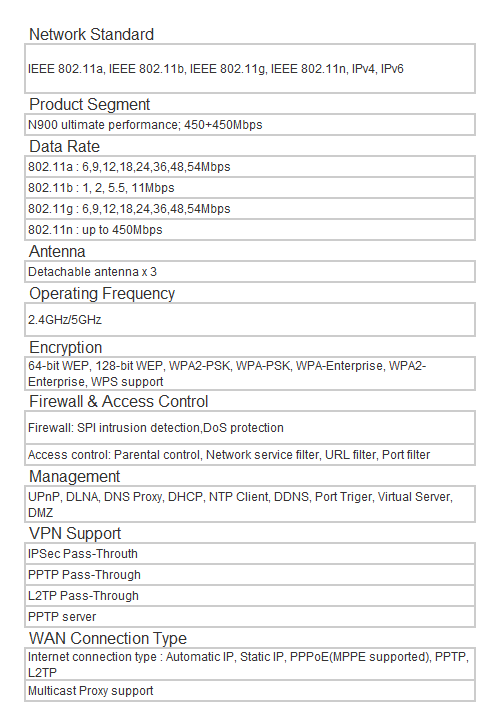 |
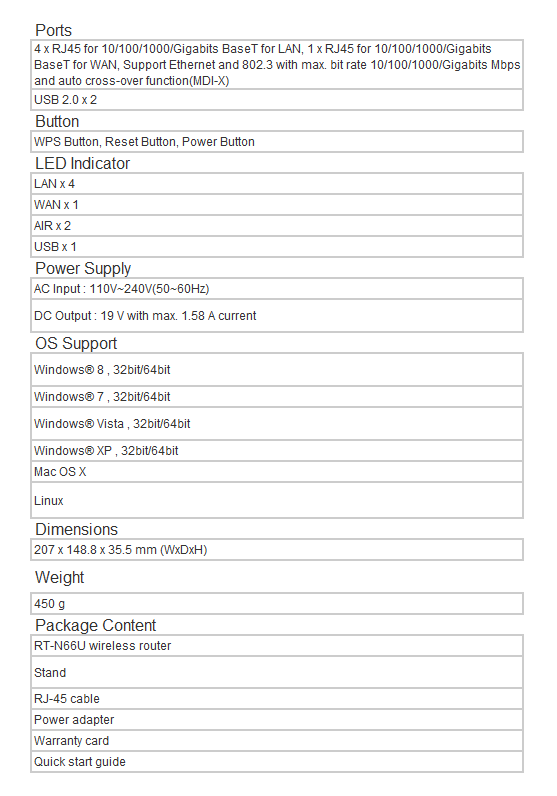 |
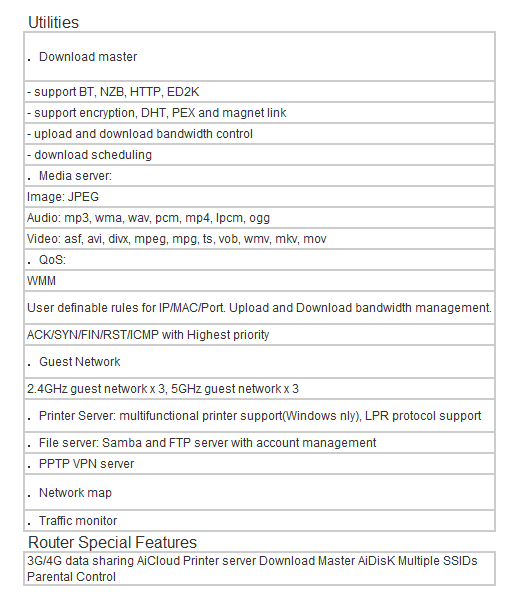 |
Like we said it is a well-designed device on paper and, so far, from the hardware we have in the lab.
